Key points:
- While product options are essential for online stores, too many choices can overwhelm customers and hurt sales.
- Conditional logic solves this challenge by dynamically showing only relevant options based on each customer’s selections.
- Store owners can implement this solution through various methods – from WooCommerce’s built-in features to advanced tools like Advanced Custom Fields (ACF®) – depending on their needs and technical expertise.
Every online store needs product options; it’s just a part of selling online, after all. It usually starts simple enough – a size dropdown here, a color selector there.
But as the business grows, so do the options. Soon enough, customers are staring at a maze of choices. A university study confirms what many store owners discover the hard way: When faced with too many options, only 3% of customers complete their purchase. Compare that to a 30% conversion rate when presented with simpler, more focused options.
This is where conditional logic comes to the rescue. Implementing smart, dynamic product options in WooCommerce lets you transform overwhelming product pages into clean, intuitive experiences. Conditional logic shows customers only the options that matter to them based on their previous selections.
Throughout this guide, we’ll explore practical ways to set up conditional logic in WooCommerce. Whether you’re running a small boutique or managing a large catalog of customizable products, you’ll learn how to create product pages that guide customers smoothly toward the final purchase while improving your conversion rates.
Why conditional logic matters for WooCommerce product pages
Think of conditional logic as your store’s assistant. When customers make choices on your product pages, conditional logic determines what options appear next. Just like a helpful sales associate who asks the right questions at the right time, this feature guides customers through their purchasing decisions without overwhelming them.
Let’s break down the three main types of conditional relationships you’ll come across:
- Basic if/then logic: This is the simplest form. One choice triggers another option to appear. For example, when someone selects “Custom Engraving” on a jewelry product, a text field appears for entering the engraving message.
- Multiple conditions: Sometimes, you need several conditions to work together. Consider a custom furniture store. When a customer selects both “Leather” as the material and “Sectional” as the style, specific color options become available. This helps prevent invalid combinations and streamlines the selection process.
- Dependent choices: These are like dominos – each choice affects what comes next. A great example is customizing a computer. Selecting a specific motherboard determines which processors can be chosen, which then affects RAM compatibility, and so on.
The backend connection: Why conditional logic matters behind the scenes
The smooth customer experience on the frontend starts with solid backend configuration. Here’s why backend conditional logic is just as important:
- Managing products with many variations becomes much simpler with conditional logic. Instead of creating dozens of separate product pages, store administrators can set up rules that automatically show or hide options based on customer selections.
- Backend conditional logic helps collect only relevant information. When a customer chooses standard shipping, there’s no need to show gift-wrapping options. This focused approach means cleaner order data and fewer customer service issues down the line.
- As your product catalog grows, conditional logic becomes even more valuable. Adding new products or updating existing ones becomes more manageable because the rules are already in place. Need to add a new size option? The existing logic handles it automatically.
- The frontend shopping experience relies entirely on how well the backend is configured. When conditional logic is properly set up, customers get a smooth, professional experience.
Choosing the right methods and tools for implementation
When adding conditional logic to WooCommerce products, there’s no one-size-fits-all solution. Let’s look at three approaches.
1. WooCommerce’s basic options
The most straightforward approach is using WooCommerce’s native variable products system. It’s perfect for simple product variations like different sizes and colors, and everything works through easy-to-use dropdown menus. Since it requires no additional plugins or coding, it’s great for small to medium product catalogs. For example, a T-shirt shop might use this to show available sizes based on the color selected.
2. Dedicated conditional logic plugins
The next option is using purpose-built plugins like WooCommerce Product Add-ons or WooCommerce Product Options. These plugins add more sophisticated options without requiring technical knowledge. They have ready-to-use rule builders that support everything from multiple-choice fields to text inputs and file uploads. Since they integrate smoothly with existing WooCommerce products, they’re excellent for handling complex pricing calculations.
A custom cake shop, for instance, might use these plugins to show frosting options only after a cake flavor is selected and then display pricing based on those combinations. The visual interface makes it easy to set up these relationships without touching any code.
3. Advanced Custom Fields (ACF®)
For developers working with product options, ACF offers a powerful solution for creating conditional rules on the backend. While it requires a little more technical knowledge, it opens up many possibilities. Developers can create custom fields that generate the exact product options needed on frontend pages, with deep integration into both WordPress and WooCommerce. This means complete control over how options appear to customers and the ability to handle complex relationships between fields.
Take a custom furniture store: ACF can create complex relationships between fabric choices, dimensions, and pricing while keeping the interface neat and intuitive for customers. The backend remains organized and manageable, even with dozens of interdependent options.
The best part about ACF? Once you understand the basics, you can build almost any type of conditional relationship your store needs. Plus, the learning curve isn’t as steep as you might think, especially with ACF’s detailed documentation and supportive community.
Supercharge Your Website With Premium Features Using ACF PRO
Speed up your workflow and unlock features to better develop websites using ACF Blocks and Options Pages, with the Flexible Content, Repeater, Clone, Gallery Fields & More.
Plugins: Conditional logic based on customer selections
Frontend conditional logic plugins offer a way to show or hide product options based on what customers select. Let’s walk through a practical example using Barn2’s WooCommerce Product Options to set up gift-wrapping options.
Here’s how to create a simple gift-wrapping system that only shows wrapping choices when needed. First, create a new product option group:
- Head to Products > Product Options.
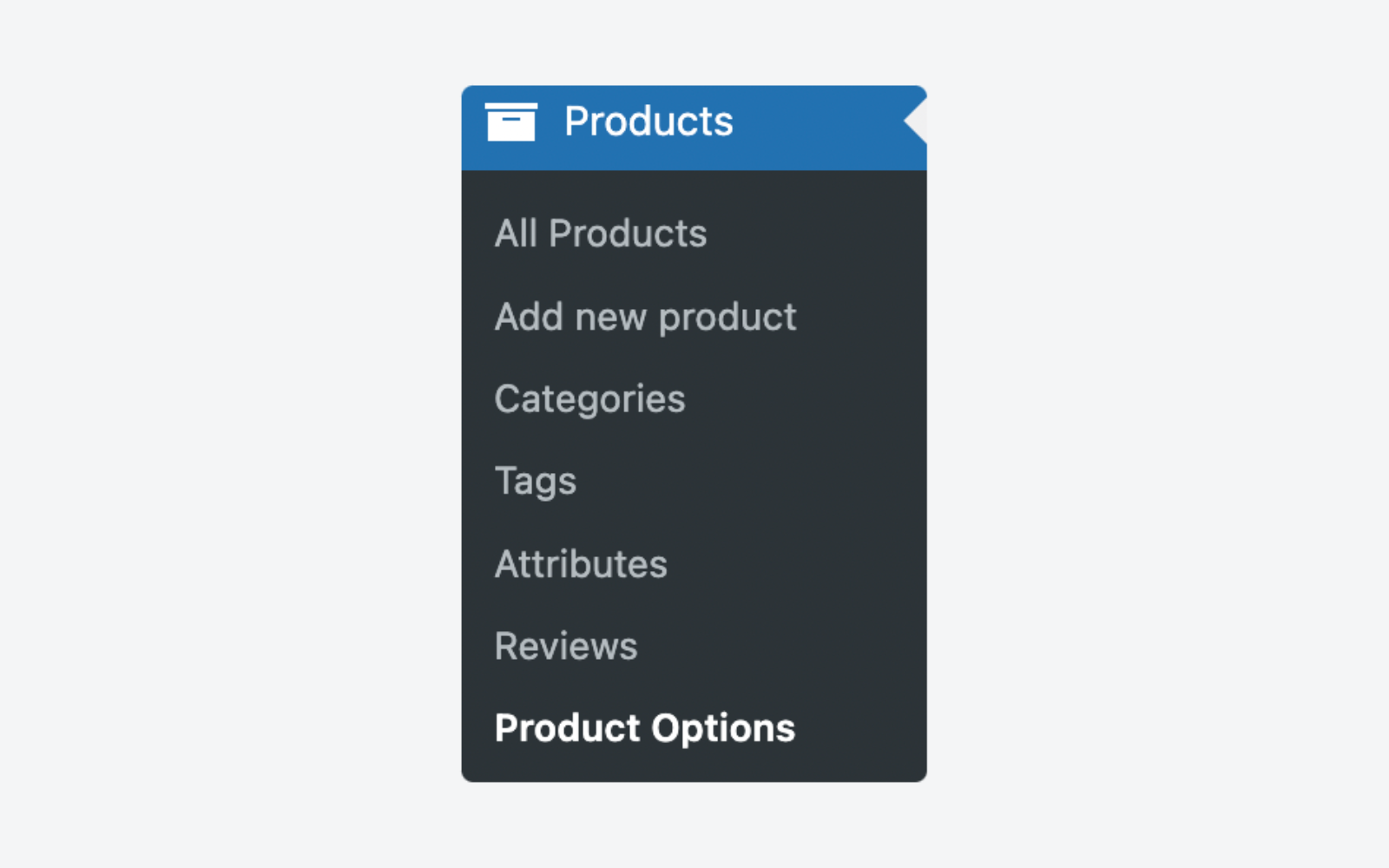
- Click Add Group.

- Name it “Gift Wrapping.”
- Select which products should have these options.
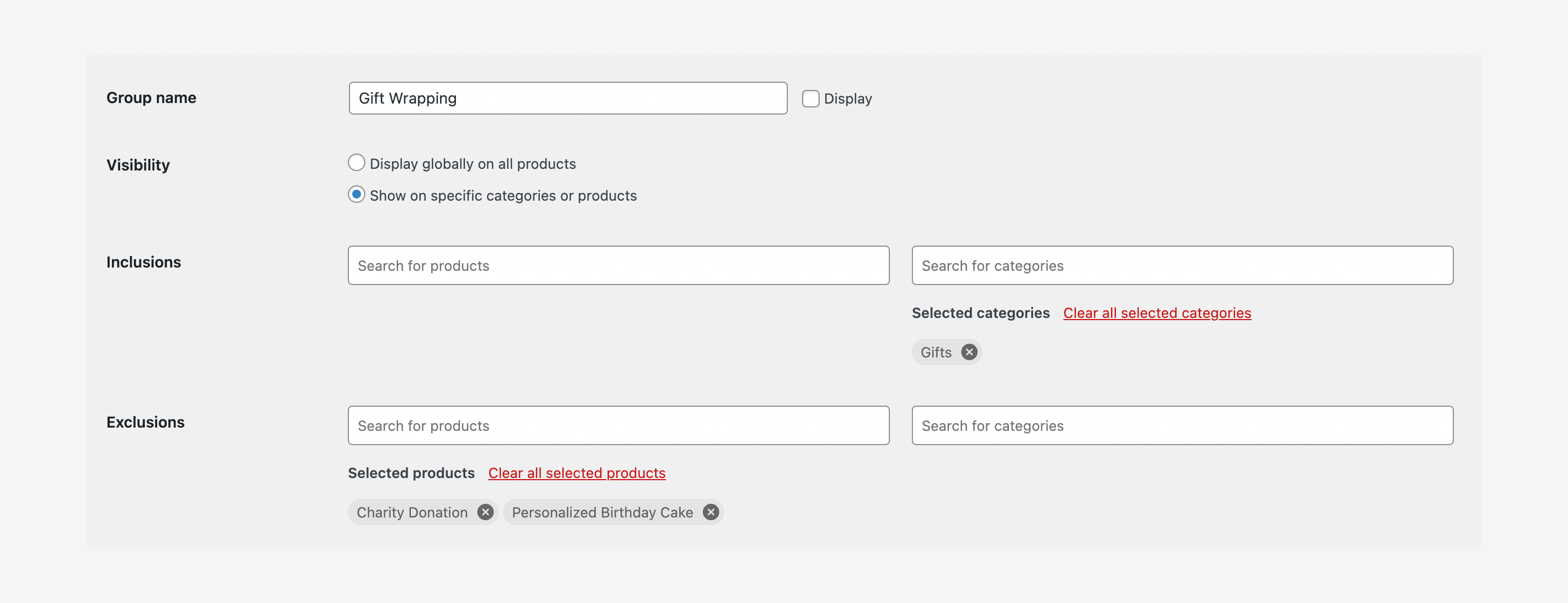
Next, set up the gift checkbox:
- Click Add Option.
- Set the name as “This is a gift.”

- Choose Checkbox as the type.
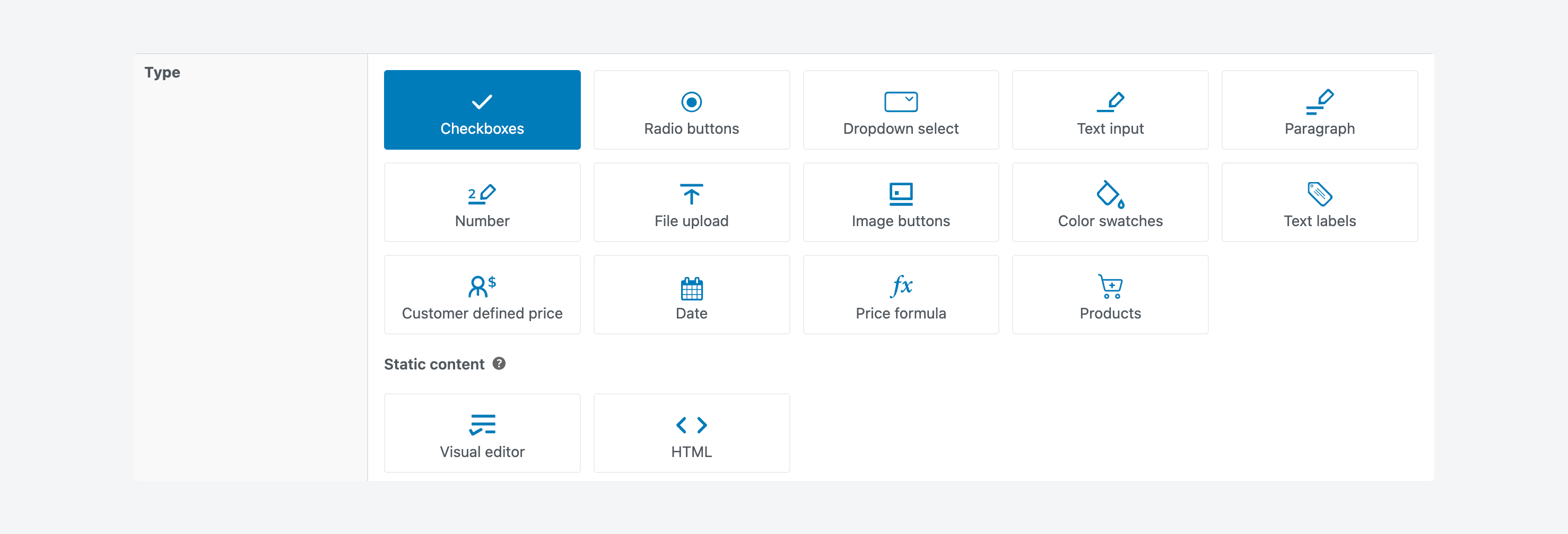
- Add the label “Make this a gift” under Choices and set the pricing.

- Save the option.
Now, for the wrapping choices:
- Add another option.
- Name it “Gift Wrap Style.”
- Select Radio Buttons as the type.
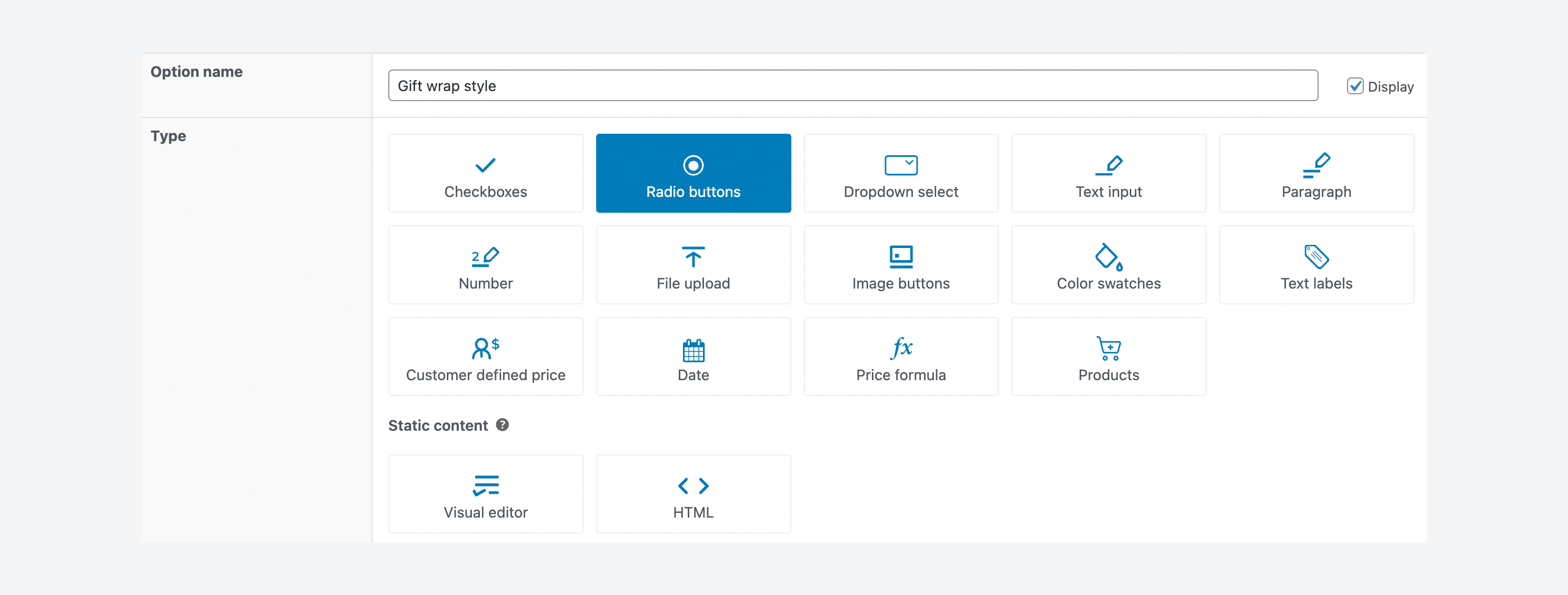
- Under Choices, create two new labels: Basic Wrap ($3) and Premium Wrap ($5).

- Open Advanced settings.
- Set the condition to show only when “This is a gift” is checked.

Finally, make sure to test everything works:
- Preview the product page.
- Check that only the gift checkbox appears at first.
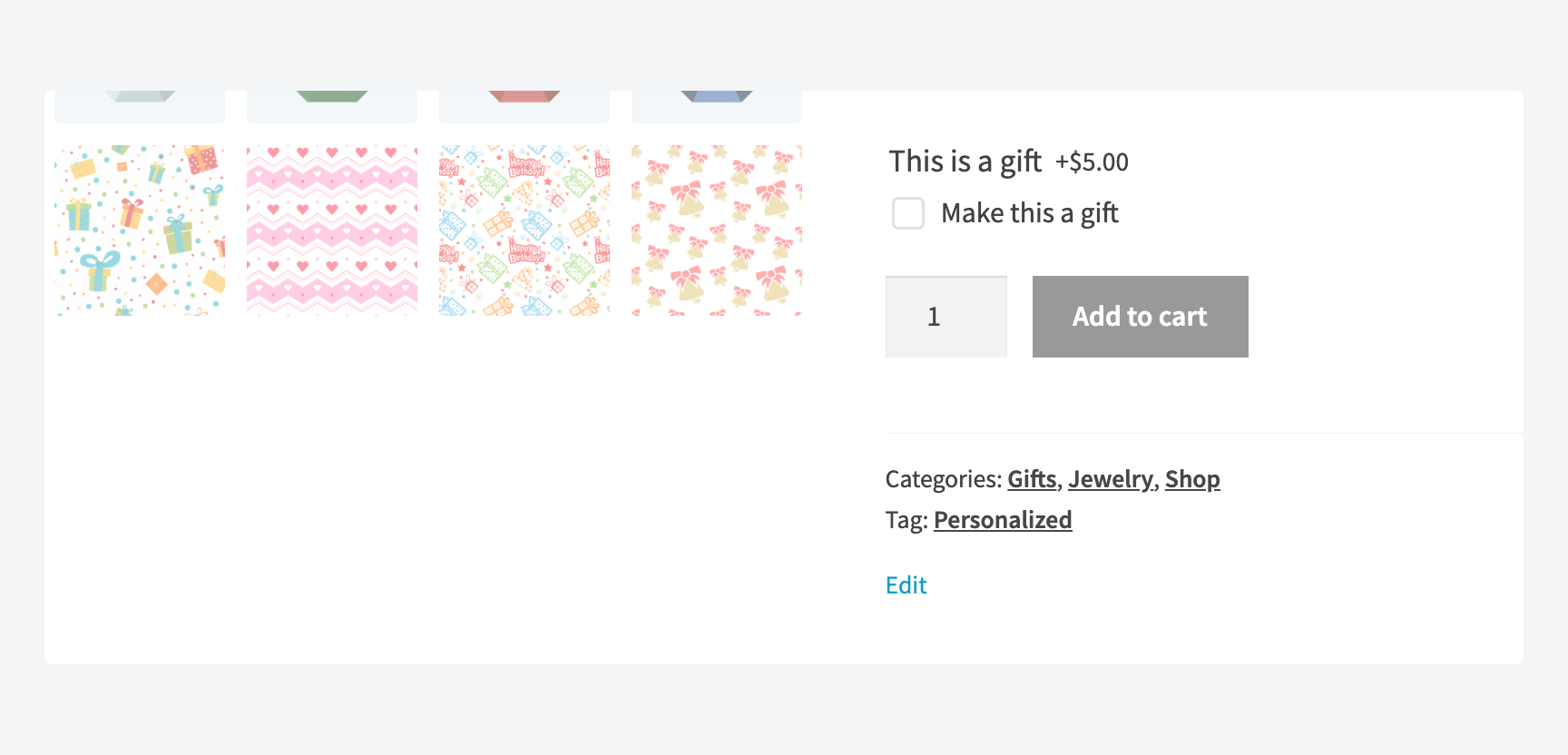
- Select “Make this a gift” and watch the wrapping options appear.
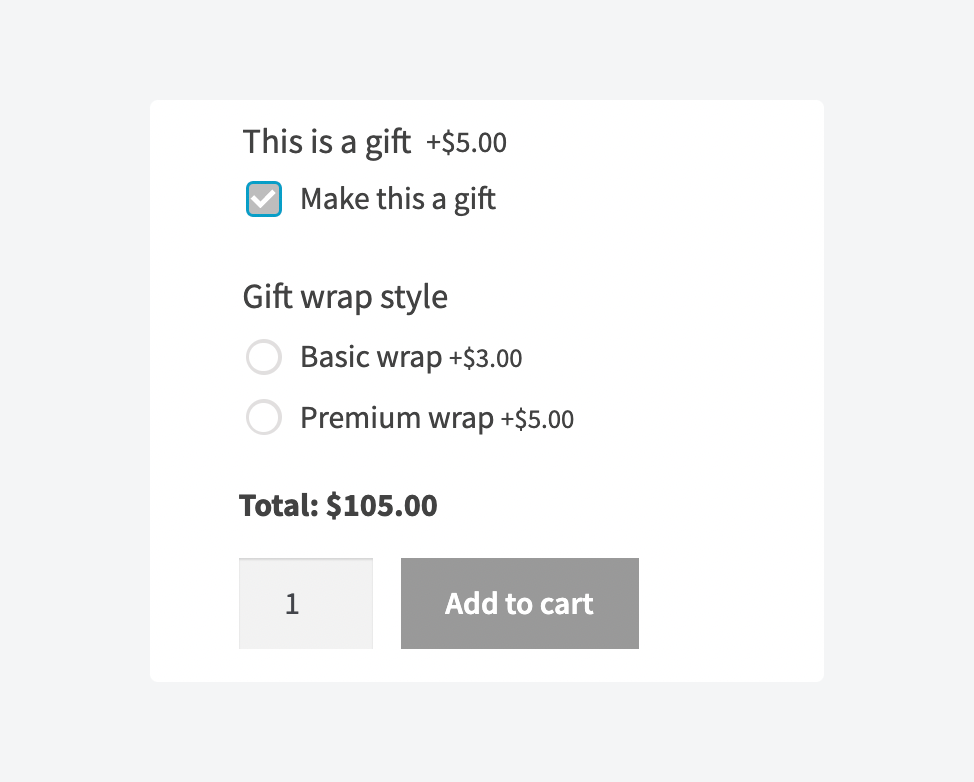
- Add the final choices to the cart to verify the pricing works correctly.
Setting up custom fields with conditional logic using ACF
ACF is perfect for creating an efficient backend experience for store management. It enables administrators to manage complex content types effectively without overwhelming users with unnecessary options or information. Here’s how to set up conditional logic for WooCommerce products using ACF:
- Install and activate the ACF plugin. Once activated, look for the ACF menu item in your WordPress dashboard.
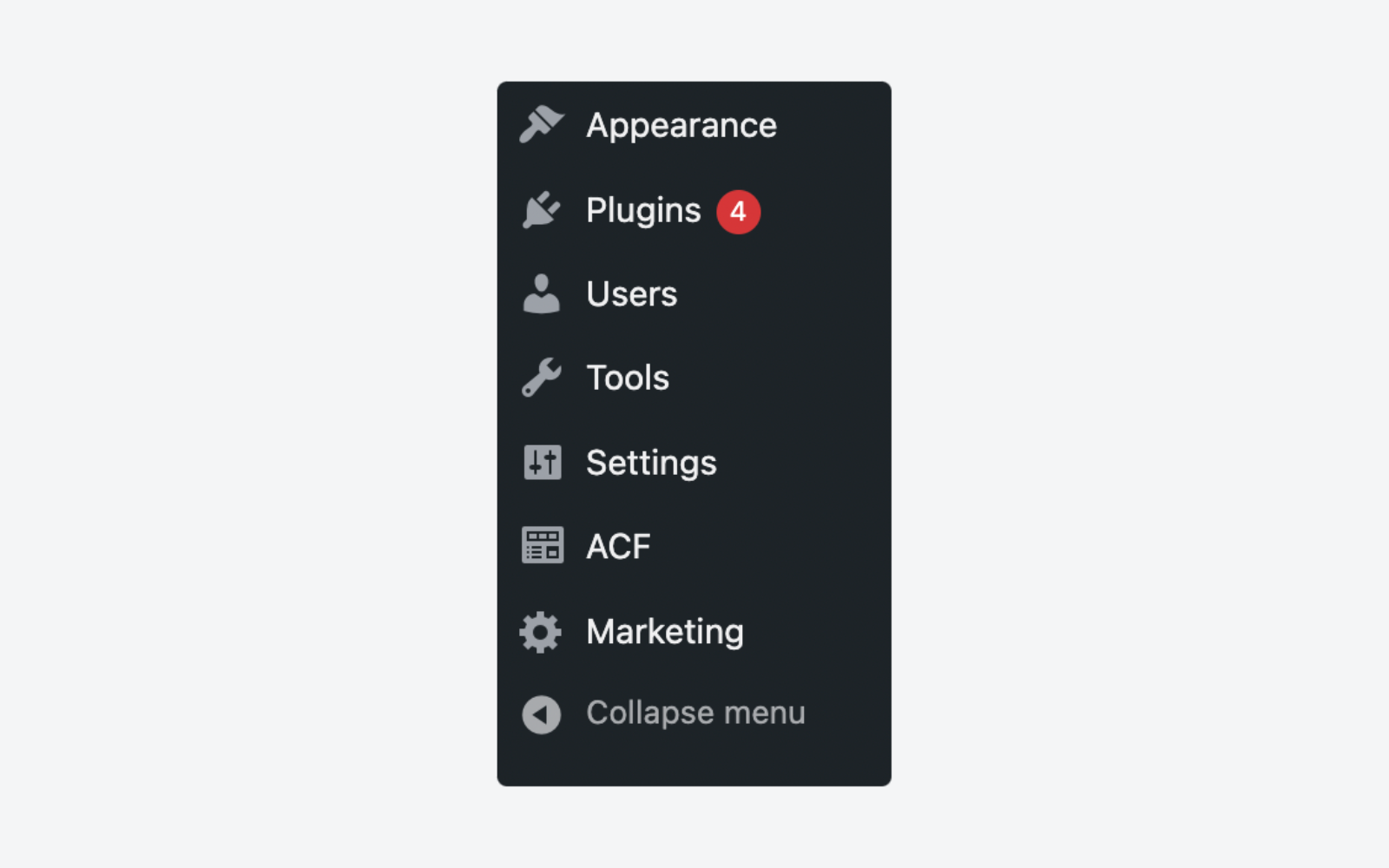
- Now, let’s create a practical example for gift wrapping options. Start by going to Field Groups > Add New. Name your field group something clear like “Product Gift Options.” This is where all your gift wrapping fields will live.
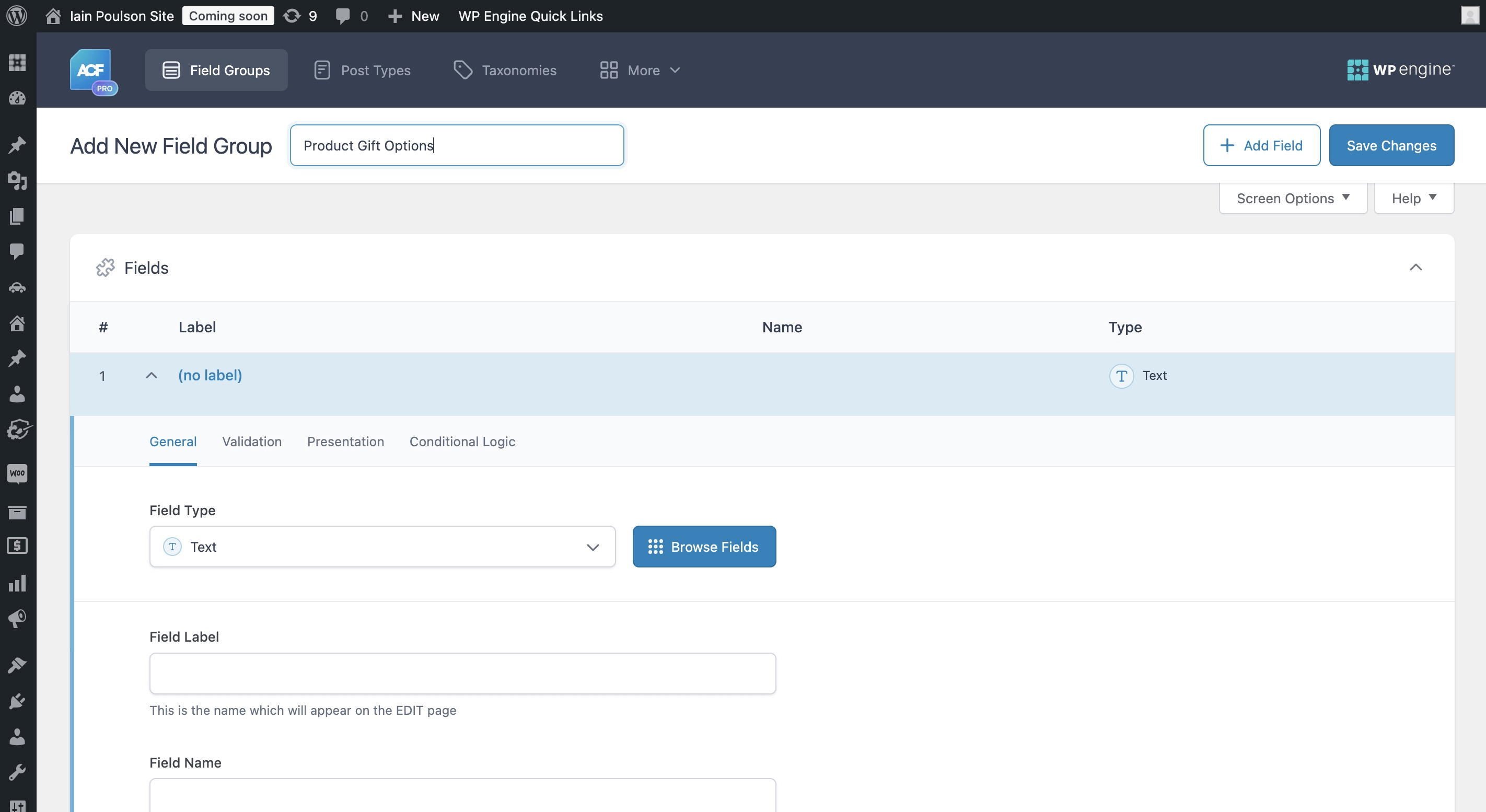
- Create your first field. Click Add Field and set it up as a True/False field. Name it “Gift Wrapping Available” and add helpful instructions like “Enable gift wrapping for this product.” This will be the main toggle for all gift options.
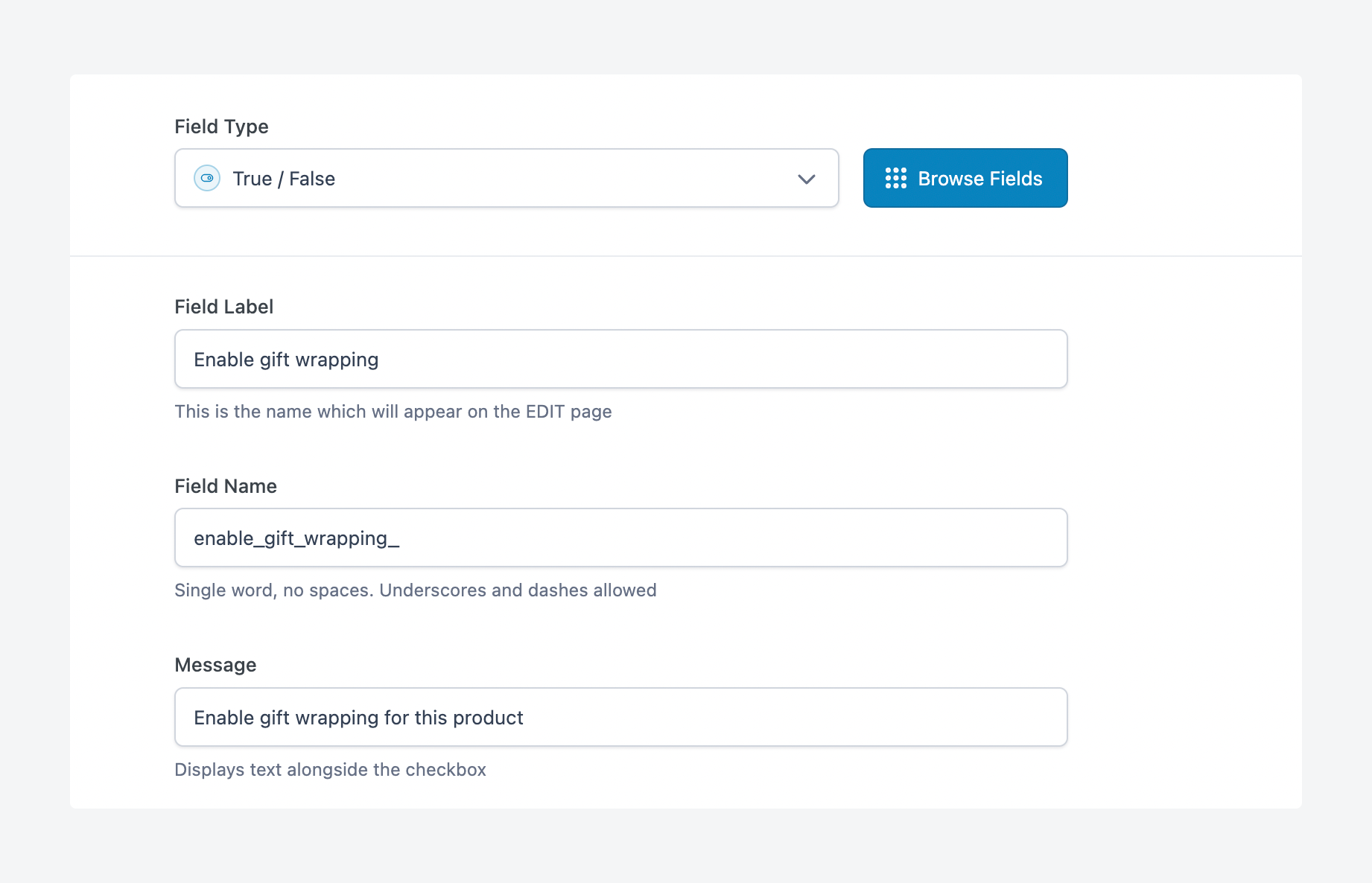
- Select Add Field again and choose Radio Button as the field type. Name it “Wrapping Options” and add your choices. Each choice should include the option name and price – for example, “Basic Wrap | $3” and “Premium Wrap | $5” on separate lines.
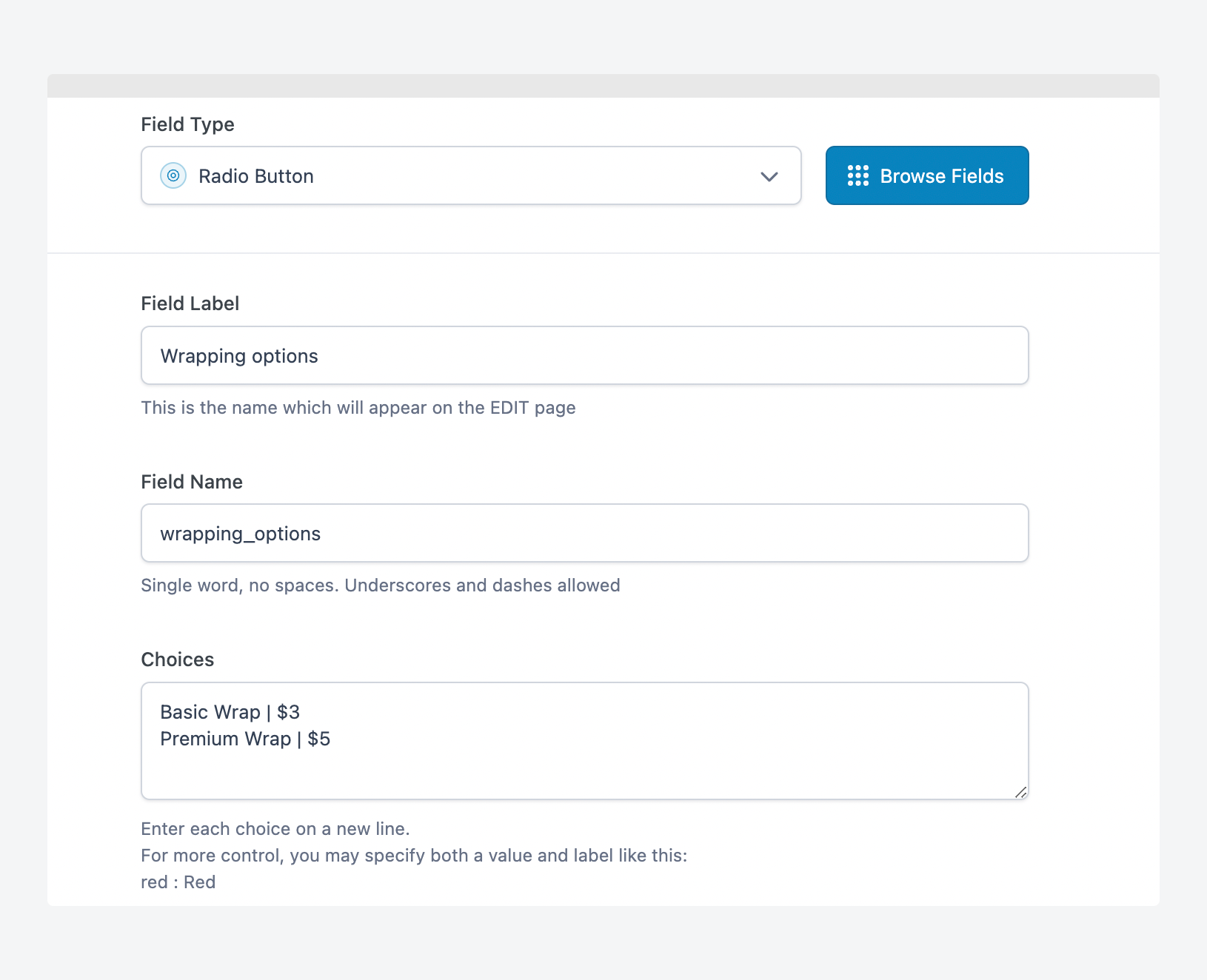
- In the Wrapping Options field settings, find the Conditional Logic tab and turn it on. Set up your first rule: show this field when “Enable gift wrapping” equals “Checked.” This ensures the wrapping choices only appear when gift wrapping is enabled for a product.

- If you need more complex rules, you can add additional conditions by clicking Add rule group for OR conditions or Add rule within a group for AND conditions.
- To display these fields on your product pages, set the Location Rules to show this field group when Post Type equals Product.

Always test thoroughly before going live. Create a test product, toggle the gift wrapping option on and off, and verify that all your conditions work as expected. Check that pricing updates correctly in the cart and that customers see only the relevant options.
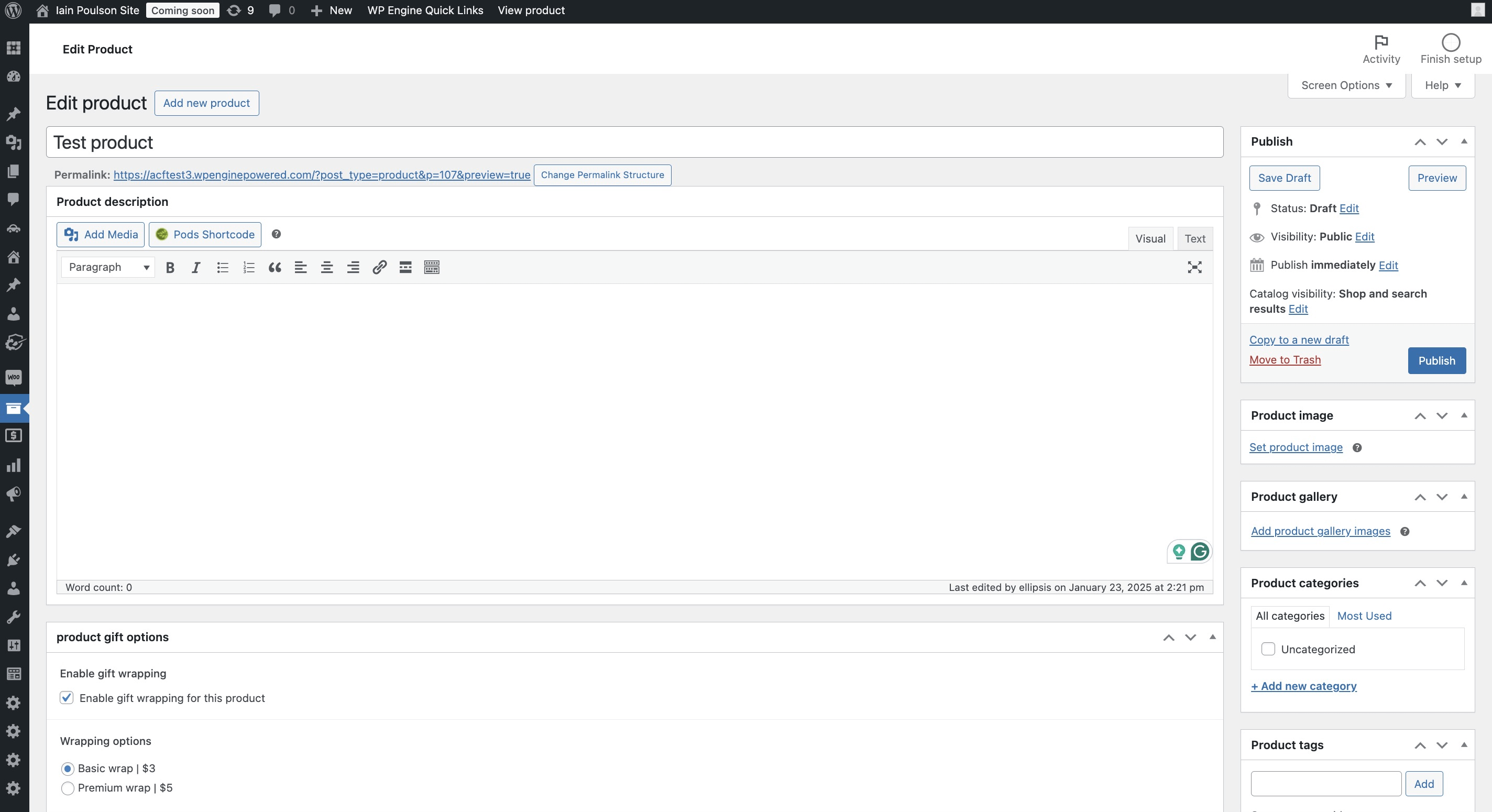
Advanced implementation with ACF PRO
ACF PRO adds several useful features that make conditional logic even more practical for WooCommerce stores. Here’s a look at how these premium tools work in real-world situations:
- The Repeater Field simplifies backend management by providing an efficient way to handle repeating content and product options. Take a custom skateboard shop as an example. By combining Repeater Fields with Conditional Logic, you can create dynamic product options where customers can select deck size, wheel type, and bearing options. The Conditional Logic rules then control which options are shown or hidden – for example, when someone picks a particular deck size, the system automatically displays only the compatible wheel options.
- Flexible Content Fields make it simple to handle different types of products. A furniture store might use this feature to create different product customization layouts. For sofas, customers would see fabric swatches and dimension options. For dining tables, they would get wood finish samples and seating capacity choices. The conditional logic ensures customers only see options that make sense for each product type.
- Clone Fields are perfect for stores with consistent product options across different categories. Rather than rebuilding the same gift wrapping options for every product type, simply clone the field group and adjust as needed.
- Options Pages tie everything together at a store-wide level. You can set up global rules once, like showing specific shipping options for products over $100, and apply them automatically across your entire catalog. This keeps your product options consistent and saves time in the long run.
Take your WooCommerce store to the next level with conditional logic
Conditional logic transforms cluttered product pages into clean, focused shopping experiences. When customers see only the options relevant to their choices, the path to purchase becomes clear and straightforward. No more overwhelming customers with unnecessary fields or irrelevant choices.
While WooCommerce offers several ways to handle conditional logic, ACF provides store owners and developers the tools needed to create smart, dynamic product pages while keeping the backend organized and efficient.
What makes ACF particularly valuable is how it adapts to different needs. For simple stores, the basic conditional logic features help streamline product options. For complex stores with extensive customization needs, ACF PRO’s advanced features provide the flexibility to handle intricate product relationships.
Ready to streamline your product options? Get started with ACF and create smarter, simpler WooCommerce product pages today.

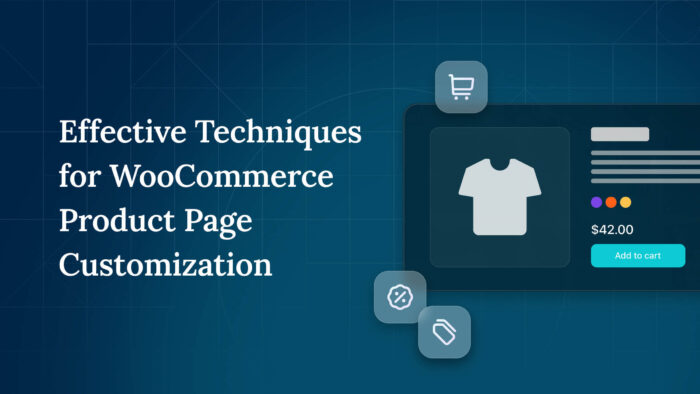



For plugin support, please contact our support team directly, as comments aren't actively monitored.